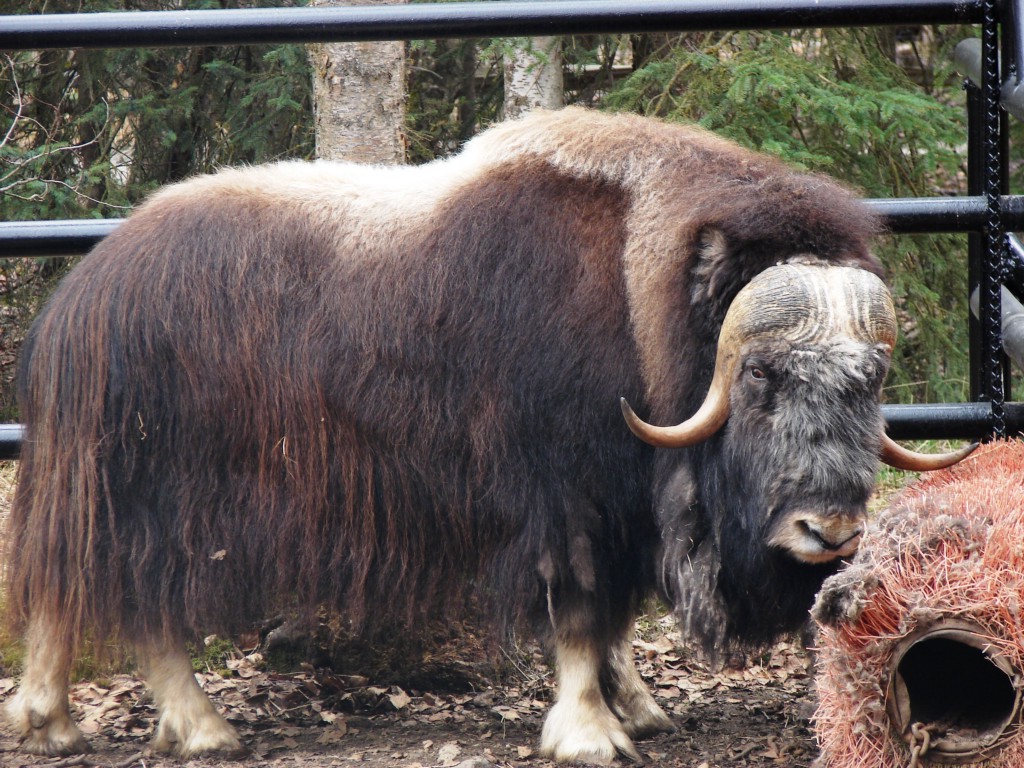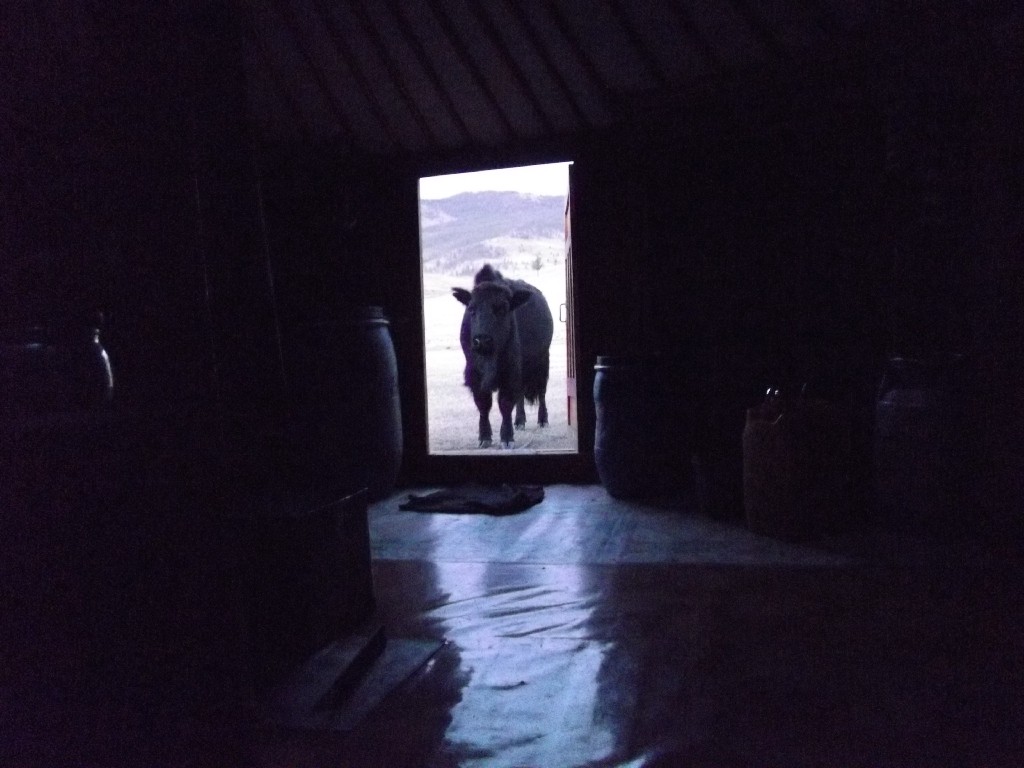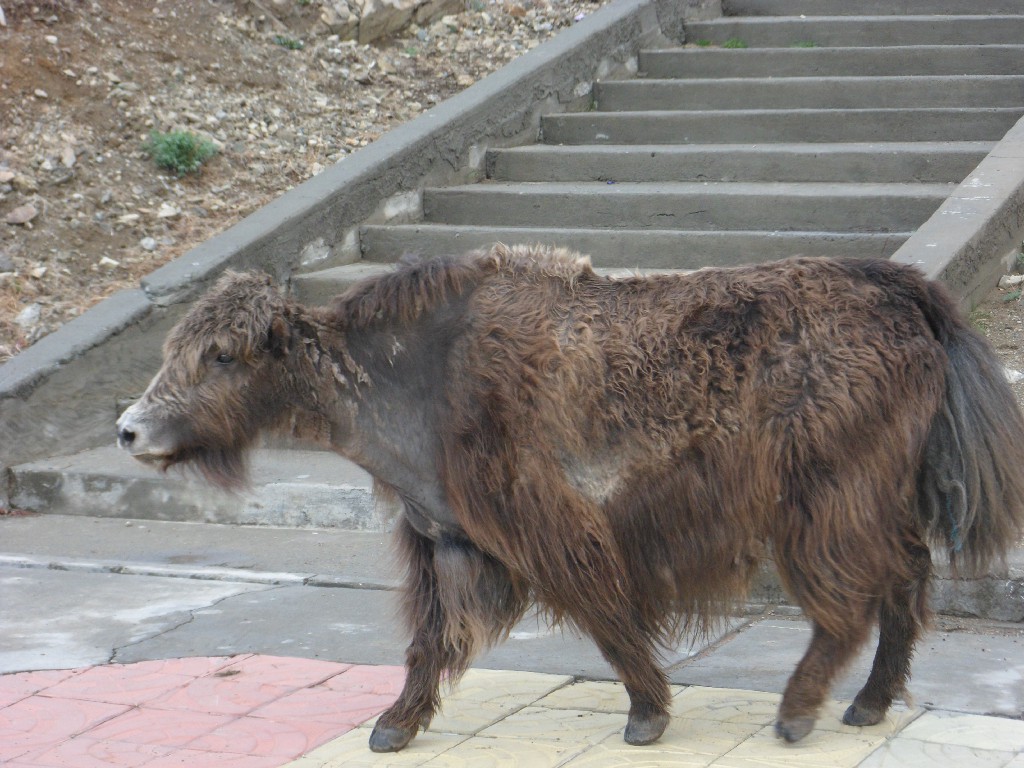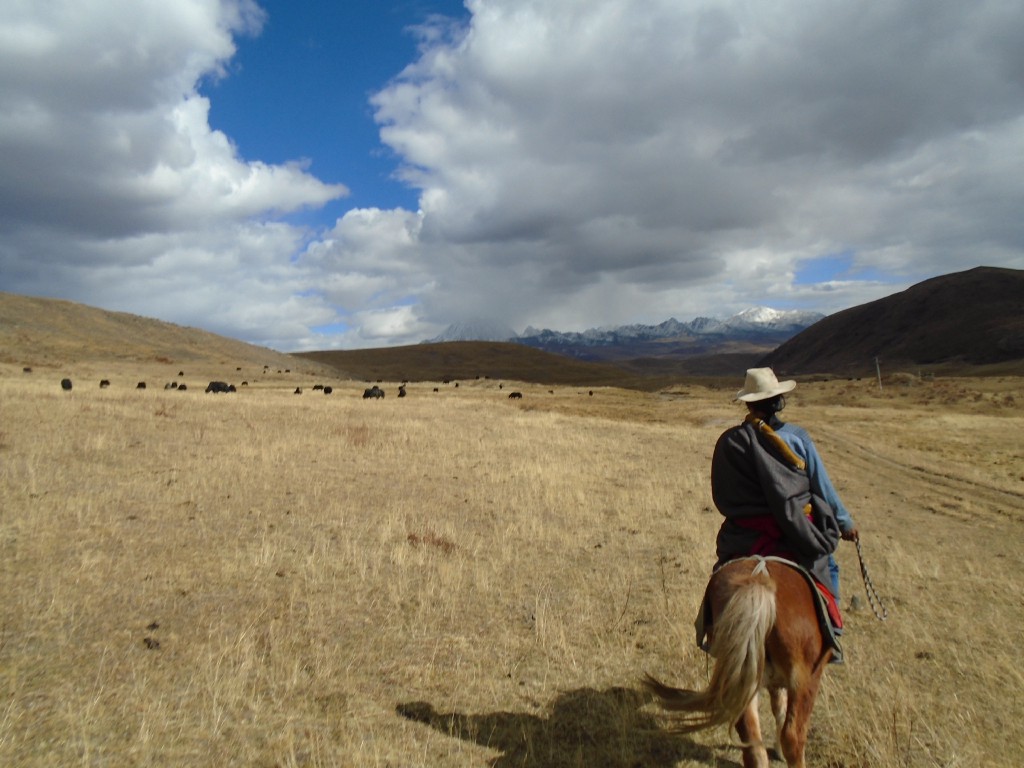American Pastoral
Can a yak economy flourish in cattle country?

Sometimes in or around Athol, a hamlet of just over six hundred people, down the highway from Lake Pend Oreille in the Idaho panhandle, you’ll see a septuagenarian riding a half-ton yak. They are Lynn Taylor and Makloud, the latter of whom, since Taylor started raising him from infancy about a decade ago, has taken to following the old rancher around like a dog. The duo cut such an odd picture, cantering about buddy-buddy through the tinder-dry pines of nearby Farragut State Park, that they’ve become local celebrities — even the Spokesman Review, eastern Washington’s paper of record, saw fit to report on Makloud’s urinary tract issues last summer.
Makloud isn’t famous because he’s a yak, an animal many would think of as totally foreign to America, though. He’s just famous because he’s especially gregarious. Oddly enough, yaks have become an increasingly common sight in Idaho and throughout the American West. So have a number of other exotic species — from alpacas to ostriches — as rural entrepreneurs, hobbyists, and old farmhands cast about for some new niche in the turbulent modern world of American livestock. Yak herds have been slowly but steadily growing in number since the late 1980s thanks largely to their unique suitability to the American landscape and growing appeal within the consumer market. Although they’ll likely never be as popular or common as cattle, yaks are well on their way to becoming an established and highly visual mainstay of the countryside of the Mountain West.
First domesticated around five thousand years ago in the southern Himalayas, yaks have long been beasts of burden as well as sources of deep red meat, thick milk, and soft wool in places like Nepal and Tibet — from whence the word “yak” originates. Some regions, like Gilgit-Baltistan in Pakistan’s cut of the Himalayas, even use yaks as mounts in traditional competitive sports, like polo or yak-back races (which look even cooler than they sound). Living over two decades on average, with males weighing between twelve hundred and fifteen hundred pounds (and females half of that), they offer years of good breeding and service and hundreds of pounds of meat when slaughtered. (Wild yaks, Bos mutus, are even larger, but have a much nastier temperament than the domesticated Bos grunniens, a name that actually means “the grunting ox.”) Throughout the region, farmers lead a combined herd of well over ten million. Until the early twentieth century, though, they were almost entirely absent outside of the Himalayan region.


Yaks first came to America through the efforts of Ernest Thompson Seton, an English immigrant to the U.S. by way of Canada, who co-founded the Boy Scouts of America in 1910. Two years before that career high, the naturalist-survivalist Native-American-distorting-appropriationist Seton somehow got it into his head that yaks would do well on the North American prairie. After years of effort, he arranged for nine Mongolian yaks to make their way to Canada, where they were dumped on some Alberta ranchland for experiments — that never went anywhere.
A broad awareness of yaks and their utility persisted in the US; recognizing its quality, wig makers used yak hair to make fine clown wigs and even the Ur Chewbacca costume in the 1970s. But many didn’t think yaks could be viably ranched in the US, if they thought of them at all.

Then in the late 1980s yaks attracted the attention of those seeking alternative livestock — like Athol’s Taylor, who discovered them while researching ranch options in 1989. Interest grew rapidly enough that in 1992 members of fifteen ranches formed the International Yak Association (IYAK). In 1997, the beasts made an appearance at the National Western Stock Show, basically the Consumer Electronics Show for ranchers. Within a decade, the number of ranches recognized by IYAK had doubled, and as of today there are well over a hundred in the U.S.; national yak herds have increased from just two thousand around 2003 to over ten thousand today. Many herders cluster in Colorado and Montana, but outposts of American yak culture have sprouted up in Vermont, California, and even Texas (though the Dallas-area rancher experimenting with them has had trouble with the heat).
That might not seem like much in the grand scale, but it’s an impressive growth curve when you consider the rapid collapse of the other exotic ranch animals that took off in the late 1980s. During that decade, growing interest in alpacas, emus, guanacos, ostriches, and vicunas, prompted the F.D.A. to offer inspections for the slaughter and management of a wider range of animals than ever before. Spurred on throughout the 1990s by aggressive marketing (including a range of infomercials) projecting the notion that exotic animals were easy to raise and would yield quick and easy money from sales to a public eager for novel meats and animal byproducts, herds grew rapidly. By 1993, there were fifty thousand ostriches and thirty-five hundred ostrich farms in the US; by 2007, there were around a hundred thousand alpacas. They were so common in the rural West especially that every now and then a bemused hiker would happen across a renegade emu or llama on the lam.


The exotic animal bubble was just that; herders never developed viable domestic markets or processing for their meat or byproducts (like alpaca wool or emu grease). Those who profited largely made money by selling breeding stock animals to each other. By the early 2000s the bubble popped, with exotic ranches downsizing or going out of business, sometimes leading to the mass neglect and death of small herds at the hands of incompetent amateur owners.
The only exception was the bison, America’s native bovine species (which shares an ancient common ancestor with yaks). Once numbering up to thirty million on the Great Plains, bison were nearly hunted to extinction in the 19th century. But thanks to private ranching spurred on by the same market impulses that drove other exotics — and bolstered by the public support of conservationists and big names like media mogul Ted Turner — there were over four hundred thousand bison in the U.S. by the early 2000s, mostly in commercial herds whose sizes seem to have stabilized over the last decade. Their meat even made it onto mass supermarket shelves at a fair price.
Lacking the same patriotic narrative and history, yaks have not taken off with equal alacrity. But their steady growth throughout the decline of other foreign exotic animals in the U.S. is remarkable. It’s due in part to the fact that herders have made an honest effort to develop markets for every part of the yak, with only a few breeders devoting most of their time and efforts to selling yaks to other ranchers. Yak fibers, laboriously worked from their coats, are prized by some for their relative affordability and quality and are essential within niche industries like wig-making and fishing-fly manufacture. Yak meat is far less fatty than beef or even most chicken, largely organic, high in healthy oils, and (while more expensive than most beef or even most bison cuts) cheaper than many exotics. Even their bones have found a market amongst artists and decorators and byproducts among select dog-treat makers.

More importantly, yaks fit into underutilized parts of the American landscape (by livestock at least) exceptionally well. Nimble on their feet and adaptable to a range of temperatures, yaks do well on open tracts of scrub mountain land. They’re also ravenous wild foragers, eating almost anything (save milkweed), meaning they can graze over land other animals have used and still do well. Extremely docile, they don’t require heavy fencing (like aggressive bison) — and will at times respond to names like a pet. Capable of fending for themselves and surprisingly disease-resistant, they’re low-maintenance in the extreme. To cap it all off, they require only a fraction of the amount of food cattle require to produce the same amount of incredibly rich and juicy meat.

All of this appeals not just to entrepreneurs looking to make use of often-neglected resources, but to some cattle ranchers as well. Although many ranchers are relatively intransigent, the industry has faced tough times in recent years. Beef prices have plummeted over the past couple of decades, and national herd sizes are largely stagnating as Americans increasingly opt for other sources of protein. Even some bison herders have opted to turn to yaks, especially after recent drought-linked hardships.

There are still quite a few barriers to the growth of the American yak herd. Yaks take twice as long as cattle to mature, and the small size of the market means that right now herders have to pay a premium to clear health inspections. “The beef guys will kill more cows in a single shift in one plant than there are yaks in the whole country,” Jim Watson, the then-head of IYAK, told GOOD Magazine in 2014. Consumers aren’t familiar with the meat, and there is limited information and support for new herders.
But yak herders have long reported that there’s more than enough demand for their products. Every year, more restaurants and retailers are opening up to yak meat, just as awareness of yak byproducts has grown, slowly helping the national herd to grow throughout the mountains with relative security. “It will be even larger,” Watson said, “but still farm-based and local.”
While it will never rival cattle, or even bison, the yak economy is a constantly expanding niche in lands long devoid of serious herding. Small herds of a few dozen to a couple hundred shaggy, gentle beasts will likely continue to crop up along the spine of the Rockies and even, perhaps, parts of the Appalachians, over the coming years, growing more and more visible and normalized. Eventually, they may even become an accepted and everyday symbol of the Mountain West, a landscape into which they slide physically and psychologically with ease, just as cattle in the Open West.
